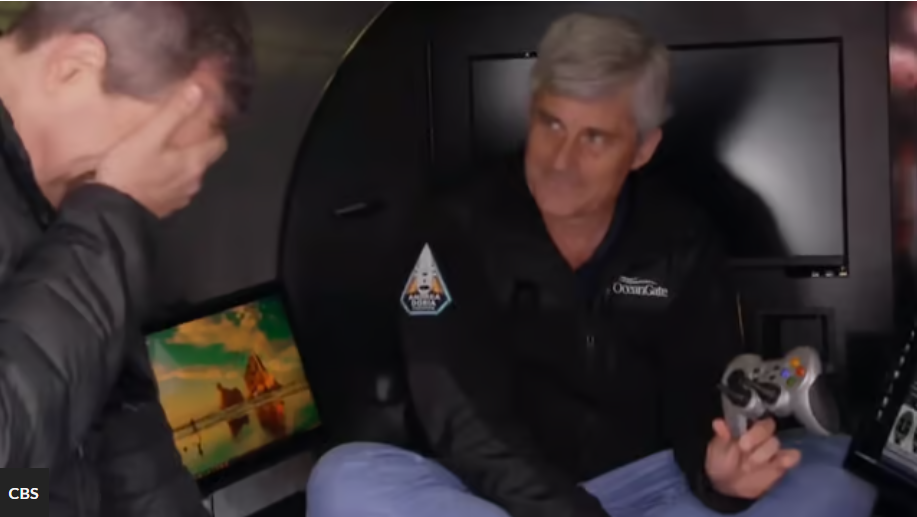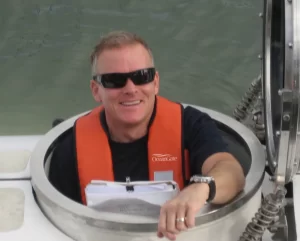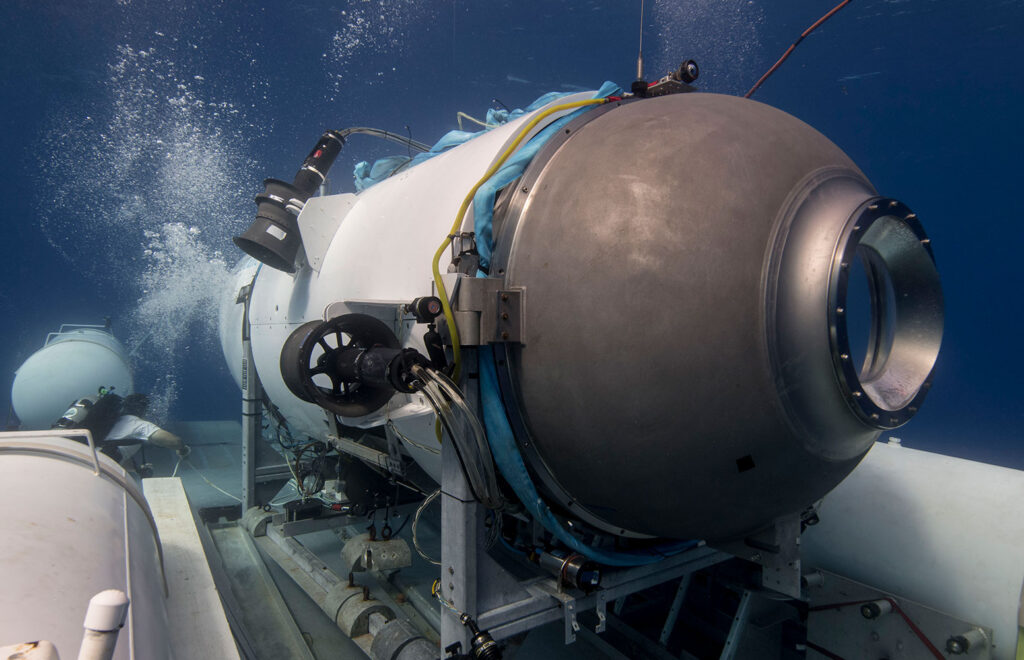OceanGate is owned by a man named Stockton Rush, who was also the acting pilot of the submersible when it went missing around the wreck site of the Titanic.

Stockton Rush, CEO of OceanGate.
He’s an interesting character, and like many public figures has had his share of lawsuits…
For instance, being sued for over $200,000 for selling Titanic expedition tickets that never occurred.
The Hagles further stated that Mr Rush made “false representations” that the vessel would be ready to dive to the Titanic by June 2018, and convinced them to sign a second contract pay the full $105,129 per-person fee.
The promised trip to the Titanic wreck in 2018 was later cancelled as OceanGate had not had sufficient time to certify the Titan to travel to the 4,000m depth, the Hagles said.
A subsequent trip in 2019 was also cancelled after a support vessel pulled out. Then in late 2019, the rescheduled 2020 expedition was abruptly cancelled, the Hagles claim.
The couple said their repeated efforts to get a refund were denied, and they were later told that if they refused to go on the 2021 expedition they would lose their money.
The case has not had any activity since it was filed in February.
Though… looking back those folks are probably appreciative they were finessed now.
The entire case revolves around the fact the OceanGate submersible wasn’t departure ready.
Which really puts into perspective how rushed this company was.
Safety Warnings From the Marine Technology Society
Back in March 27th, 2018, Stockton was warned their submersible didn’t meet safety standards.
The main point they made in the letter sent to Stockton was that it didn’t “meet or exceed the DNV-GL safety standards” – the DNV is an organization widely known and involved in maritime regulations.
Which… you’d think is even more so important in the case of the construction of a submersible, in comparison to something like a boat.
The submersible they used was entirely custom built. It’s not like they purchased a used Soviet-era submarine and started giving Titanic tours.
Stockton dismissed getting his custom submersible inspected and up to DNV-GL safety standards, saying it would prevent innovation and they were fine.
The submersible is operated by an old Logitech controller to give you some perspective:

(Stockton Rush pictured with Logitech controller.)
If you’d like to obtain your very own submersible controller, you might be able to obtain one for $29.99:
https://twitter.com/QixOfMTF/status/1671024169956573186
It also used texting for communication, and had no kind of emergency beacon.
One reporter with first hand experience said that they had actually lost the submersible for five hours when he went out to cover OceanGate:
This submersible does not have any kind of beacon like that. On my expedition last summer, they did indeed get lost for about 5 hours, and adding such a beacon was discussed…
— David Pogue (@Pogue) June 19, 2023
They even published a blog post on their site explaining why they don’t follow typical safety standards.
Most major marine operators require that chartered vessels are “classed” by an independent group such as the American Bureau of Shipping (ABS), DNV/GL, Lloyd’s Register, or one of the many others. These groups have assembled very detailed standards for classing everything from oil tankers to auxiliary ship equipment like Remotely Operated Vehicles (ROVs). Many of these standards are based on industry practice or covered by regulations such as reserve buoyancy, the number of life rafts, the types of materials that can be used on a hull, etc.
(Titan submersible on a platform.)
Classing assures ship owners, insurers, and regulators that vessels are designed, constructed and inspected to accepted standards. Classing may be effective at filtering out unsatisfactory designers and builders, but the established standards do little to weed out subpar vessel operators – because classing agencies only focus on validating the physical vessel. They do not ensure that operators adhere to proper operating procedures and decision-making processes – two areas that are much more important for mitigating risks at sea. The vast majority of marine (and aviation) accidents are a result of operator error, not mechanical failure. As a result, simply focusing on classing the vessel does not address the operational risks. Maintaining high-level operational safety requires constant, committed effort and a focused corporate culture – two things that OceanGate takes very seriously and that are not assessed during classification.
So, in other words:
‘We’re safe. Don’t worry.’
Source: trust me bro.
In a way… they almost seemed proud of using normal, simplistic items that you could even find at your local hardware store (or 2011 BestBuy).
All with little to no fear of the consequences of using materials that wouldn’t typically be used for a submersible.
Meet the Fired Former Director of Marine Operations

(David Lochridge, former director of marine operations at OceanGate.)
David Lochridge is the former director of marine operations that was fired for raising safety concerns.
According to NYTimes:
OceanGate’s director of marine operations, David Lochridge, started working on a report around that time, according to court documents, ultimately producing a scathing document in which he said the craft needed more testing and stressed “the potential dangers to passengers of the Titan as the submersible reached extreme depths.
It goes on further to say:
Mr. Lochridge reported in court records that he had urged the company to do so, but that he had been told that OceanGate was “unwilling to pay” for such an assessment. After getting Mr. Lochridge’s report, the company’s leaders held a tense meeting to discuss the situation, according to court documents filed by both sides. The documents came in a lawsuit that OceanGate filed against Mr. Lochridge in 2018, accusing him of sharing confidential information outside the company.
In the documents, Mr. Lochridge reported learning that the viewport that lets passengers see outside the craft was only certified to work in depths of up to 1,300 meters.
That is far less than would be necessary for trips to the Titanic, which is nearly 4,000 meters below the ocean’s surface.
“The paying passengers would not be aware, and would not be informed, of this experimental design,” lawyers for Mr. Lochridge wrote in a court filing.
So, we have:
- Lawsuits for things sold but never delivered.
- Rushed construction of a deep submersible without proper regulation.
- Minimal safety features.
- A submersible controlled by the same Logitech controller you would have played Call of Duty with back in 2011.
- A director of marine operations fired for raising safety concerns.
What could go wrong?
Safety standards exist for a good reason.
Anyways, as it stands:
We’re At Less Than One Day of Oxygen Left
Initial estimates expected oxygen supplies to last about 96 hours.
The OceanGate submersible went missing shortly after leaving on Sunday, June 18th, 2023 at approximately 7:30 AM EST.
That gives them less than a day of oxygen left.
With several on board (billions of wealth), oxygen supply running low, and no luck so far… things are looking grim.
But there’s still a chance the folks on board could come out of it yet.
Update 6/22/23: Debris was located in the area, and oxygen would have been entirely out by now. While remains are yet to be found, all on board are now certainly deceased. RIP.
























OceanGate gate.